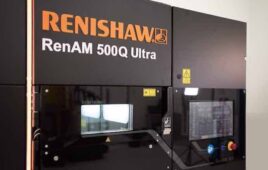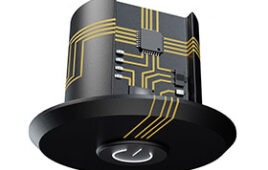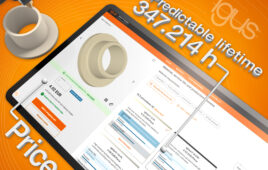It’s been quite some time, since automotive manufacturers have started using 3D printing to produce vehicle prototypes. The proliferation of additive manufacturing across automotive industry will achieve more than just saving time and money.
The industry is fast approaching the day when an intrepid adventurer, for instance, can download, print, and then build his dream car without so much as stepping out of the garage. This possibility has all the makings of a science fiction. Except, it isn’t.
3D printed automotive parts are already popping up in some of the most exotic cars of the world. Automotive companies, large, small, or medium, are using rapid 3D prototyping to push the boundaries of novelty. It is interesting to note the scale to which the most prominent names in the industry have started implementing 3D printing to their manufacturing processes.
The automotive industry has deployed 3D printing in high volumes in the previous year and in more advanced applications of automotive manufacturing. 2014 is marked as the year when the manufacturers finally moved beyond the initial stage of adoption onto more advanced stages. Some have also begun purchasing 3D printing systems.
The most recent instances when 3D printing was applied in automotive manufacturing are mentioned below. These instances also reflect how 3D printing benefited the car manufacturers:
Koenigsegg One: 1 Hypercar – 3D Printing Sped up the Development of Car Design
Among the most ingenious and radical weight-saving measures adopted by automotive companies, Koenigsegg One:1 hypercar that boasts a whopping 1,300-horsepower saved as much as 400 grams by 3D printing the exhaust tip of the car using titanium.
This by far is acclaimed as the largest titanium part to be manufactured ever using the advanced printing process. It took the Swedish company almost three days to complete the production of the exhaust tip.
3D printing enabled the manufacturers to test print the several complex and internal parts of the car and engine as per the engineer’s specifications, thereby reducing weight and enhancing the vehicle’s overall performance. The benefits of rapid prototyping, was thus evident immediately.
Ford’s 3D Printed Auto Parts Touted to Save Millions and Boost Overall Quality
When Ford Motors showcased the latest version of its hybrid cars at 2015 Detroit Auto Show, it clearly sent out a message – the company is in the midst of a departure from conventional machine tools to build early vehicle prototypes.
Ford has heavily relied on 3D printing technology to test and design the dynamic ideas of engineers. This trend is firmly on course to become an industry norm. Ford used 3D printing to develop the engine cover of the all-new Ford Mustang.
The technology not only improved the quality of vehicles produced by Fords but it also provided engineers more time and freedom to test and optimize parts.
3D Printing Helped Students to Push Boundaries of Innovation to Showcase Hybrid Cars at Masters Showcase 2015
Recently, at Masters Showcase 2015, an exhibition showcasing the works of students of the Master in Transportation & Automobile Design at the Milan-based Politecnico University, some trailblazing 3D-printing-enabled car designs were on display.
These included one that was entirely printed using professional rapid prototyping and 3D printing services by Skorpion Engineering. Ephesus 1:4 is a Bugatti inspired concept car and the lung represents the combustion chamber of the car that was 3D printed for the model in a single piece by SLA, using transparent and a high temperature resistant resin.
The “lung” was then layered with specific film and painted. Even the chromed parts of the model, which felt like real metal were also printed using the SLA technology.
The 3D printing technology helped the students to develop and showcase the latest version of hybrid car. The event was sponsored by the biggies in the automotive industry like Audi, Bugatti, and Volkswagen, which demonstrates how intrigued the automotive world is to embrace the new technology.
The widespread diffusion and increasing awareness of 3D technologies are imposing a powerful impact, especially among the community of people who nurtures an inherent keenness to experiment and try out new things.
Till now, the future of 3D printing seems very promising. With manufacturers from different segments of the market stepping up their prototype volumes, the automotive industry might as well emerge as the hot topic when discussing about the 3D printing technology in the near future.
By building concept prototypes, models, and low-volume end use parts using 3D printing, automotive engineers can work more iteratively, and move confidently into production.
For more information, visit www.transparencymarketresearch.com
Filed Under: 3D printing • additive • stereolithography, Industrial automation




